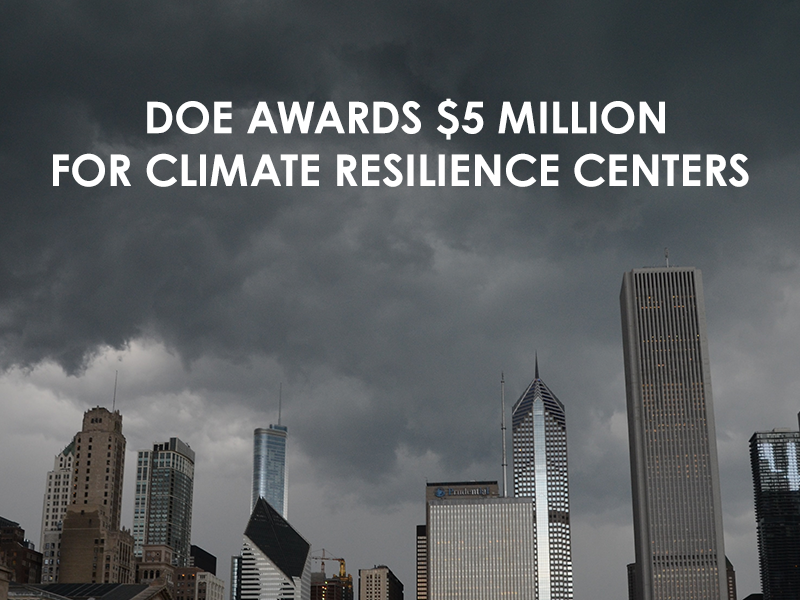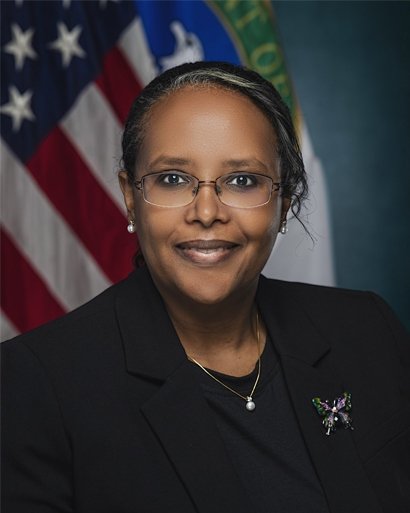DOE Announces Funding for Climate Resilience Centers
Published: 17 October 2023
CRCs will strengthen the security and resilience of critical infrastructure
 The U.S. Department of Energy (DOE) recently announced $5 million in funding for six Climate Resilience Center (CRC) projects.
The U.S. Department of Energy (DOE) recently announced $5 million in funding for six Climate Resilience Center (CRC) projects.
The goal is to improve the resilience of communities by empowering local universities to use DOE climate science to help tackle the problems posed by a changing climate.
According to Jeff Stehr, program manager for DOE’s Atmospheric System Research (ASR) program, CRCs extend the scope of DOE climate science, capabilities, and research by supporting Historically Black Colleges and Universities (HBCUs), non-R1 Minority-Serving Institutions (MSIs), and emerging research institutions (learn more about institution designations/classifications).
CRCs will form a nucleus of early career scientists, engineers, and technicians who use DOE climate science and capabilities at national laboratories, scientific user facilities, and universities. Ultimately, research outcomes will be put into practice among community stakeholders for improved local climate resilience.
“We’re very excited to see Minority-Serving Institutions and emerging research organizations bring DOE’s science-based predictive tools and methods forward to improve the availability and utility of DOE research for climate resilience, particularly in vulnerable communities,” says Stehr, who notes that three university investigators are leading CRC projects with large atmospheric components:
- Solomon Bililign, North Carolina A&T State University: The “Climate Resilience Center in Piedmont Triad of North Carolina” will apply experimental and modeling studies to investigate the chemistry that forms secondary organic aerosol and its impacts on health and climate in the region. The team will help translate the results of this work to aid Greensboro, North Carolina, city officials as they plan for future heat and air pollution conditions. Bililign’s team will collaborate with scientists at Pacific Northwest National Laboratory in Washington state.
- Minghui Diao, San Jose State University (SJSU): The “California Community and Earth-System Integrated Climate Resilience Center (CalCEI CRC)” will focus on developing a new modeling framework that fills critical gaps between earth system models and other applied science models to quantify climate resilience. It will leverage the observational capabilities at SJSU’s Wildfire Interdisciplinary Research Center to improve simulations of wildfire smoke in the next generation of DOE’s Energy Exascale Earth System Model (E3SM). It will also quantify the compounding effects of various extreme events (e.g., wildfire smoke and heat) and examine the effectiveness and equity of various strategies (modeled from 2000 to 2070). These results will be shared with an advisory team of public and private California stakeholders who will incorporate the results into model impacts on affected communities. Diao will collaborate with scientists at Lawrence Livermore National Laboratory (LLNL) in California.
- Samuel Markolf, University of California, Merced: The “San Joaquin Valley Climate Resilience Center: Informing Equitable Climate Outcomes Through Collaborative and Interdisciplinary Science for DOE Climate Resilience Centers” aims to gain a deeper understanding of how environmental and climate hazards, such as air pollution and extreme heat, vary spatially and temporally across urban environments. The work will also contextualize the effectiveness and unintended consequences of adaptation strategies for reducing air pollution and extreme heat impacts. Emphasis will be placed on identifying specific urban environmental conditions and adaptation strategies that disproportionately harm (or benefit) locations or groups. To this end, the team will work with a nonprofit organization in Stockton, California, to help regional decision-makers incorporate the results of this study into their planning process for future heat and air quality. Markolf will collaborate with scientists at LLNL.

“These awards will go to institutions that serve communities affected by the changing climate and will improve both basic climate science and community resilience,” says Asmeret Asefaw Berhe, Director of DOE’s Office of Science. “These centers will grow the next generation of scientists and leaders so they can tackle the tough problems that we know we will face in America’s diverse communities over the course of this century.”
Projects were selected by competitive peer review under the DOE Funding Opportunity Announcement for Climate Resilience Centers (DE-FOA-0002915).
Total funding is $5 million for projects lasting three years, from fiscal year 2023 dollars. The list of projects and more information can be found on the Biological and Environmental Research program home page.
Keep up with the Atmospheric Observer
Updates on ARM news, events, and opportunities delivered to your inbox
ARM User Profile
ARM welcomes users from all institutions and nations. A free ARM user account is needed to access ARM data.


















